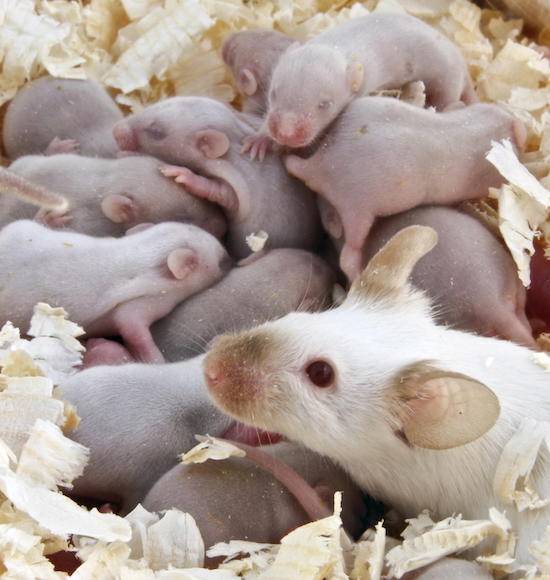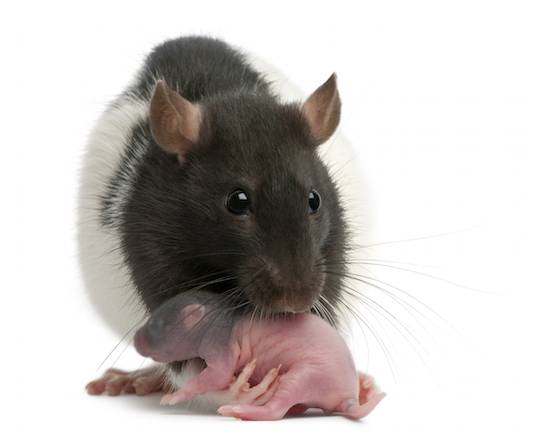
EPA enters partnership to reduce animal tests
Alternatives to Animal Testing, Experimentation and Dissection - An Animal
Rights Article from All-Creatures.org
FROM
Citizens for Alternatives to Animal Research and Experimentation (CAARE)
February 2016
Increasingly science and government have come to acknowledge the resounding failure of animals to predict the danger of chemicals to humans. Dr Kenneth Lee, senior director of A*STAR’s Biomedical Research Council, put it bluntly, stating “Even though we share a 99 per cent similarity in genes with mice … humans are definitely no 70kg mice.”
Technology to replace animals in developmental toxicity is especially needed. Such studies consume high numbers of animals. Each litter of newborns is considered one experimental unit, whether it’s rabbits, rats, mice or any other species. Typically a minimum of 20 litters are required per test dose. With litter sizes ranging from 6 to 12, over 200 animals can easily be killed in a single study.
We do 3 million tests on that robot every week on different diseases. If you and I were to do this by hand it would take us 8 hours a day several days a week for 12 years to do what this robot does in a week.
Last November CAARE reported on the development of the world’s first non-animal screening platform for kidney (renal) toxicity developed by scientists at Singapore’s Agency for Science, Technology and Research (A*STAR), the leading public sector agency for scientific advancement in Singapore. [See First animal-free platform screens drugs for kidney injury.]

Agency for Science, Technology and Research: Creating Growth, Enhancing
Lives
The renal platform uses human induced (non-embryonic) stem cells and
sophisticated high-output computer modeling to screen for renal toxicity,
producing results that surpass the predictability of animal tests.
Now CAARE is pleased to report that the U.S. Environmental Protection Agency
(EPA) is partnering with A*STAR to utilize the kidney screening platform
along with other non-animal chemical safety screens, in its ongoing efforts
to replace animal tests under the Tox21 program.
Tox21 is a U.S. program established in 2008 with the goal of using human
cells and high-speed robotics instead of animals to generate superior
human-relevant data.

Increasingly science and government have come to acknowledge the
resounding failure of animals to predict the danger of chemicals to humans.
Dr Kenneth Lee, senior director of A*STAR’s Biomedical Research Council, put
it bluntly, stating “Even though we share a 99 per cent similarity in genes
with mice … humans are definitely no 70kg mice.”
In addition to the kidney screening platform, the EPA— A*STAR partnership
will work on developing sophisticated non-animal methods for two additional
areas of toxicity testing.

Liver toxicity will be studied by combining the computational tools of
the EPA’s National Center for Computational Toxicology chemical screening
program with 3D liver models from human cells developed at A*STAR, in an
effort to overcome current shortcomings from using animals.
Drug-related liver damage is the most common cause of acute liver failure in
the U.S. and the most common reason for withdrawing drugs from the market.
Better methods for generating human-relevant data are badly needed.
Developmental Toxicity will examine the effects of a substance on
reproductive capacity and offspring by investigating key events during
development, including how substances impair the development of blood
vessels and alter the blood-brain barrier during prenatal development.
Technology to replace animals in developmental toxicity is especially
needed. Such studies consume high numbers of animals. Each litter of
newborns is considered one experimental unit, whether it’s rabbits, rats,
mice or any other species. Typically a minimum of 20 litters are required
per test dose. With litter sizes ranging from 6 to 12, over 200 animals can
easily be killed in a single study.

Despite many advances in non-animal research technologies, government and
regulatory agencies have been slow to accept these methods, tragically
causing animals to continue to suffer and die, even as replacements exist.
With the EPA collaborating on the current project, it is anticipated that
progress from the current advances will be more readily accepted for
widespread implementation.
With animals’ lives in the balance, timely implementation of promising
non-animal methods is crucial.

Return to Alternatives to Animal Testing, Experimentation and Dissection







